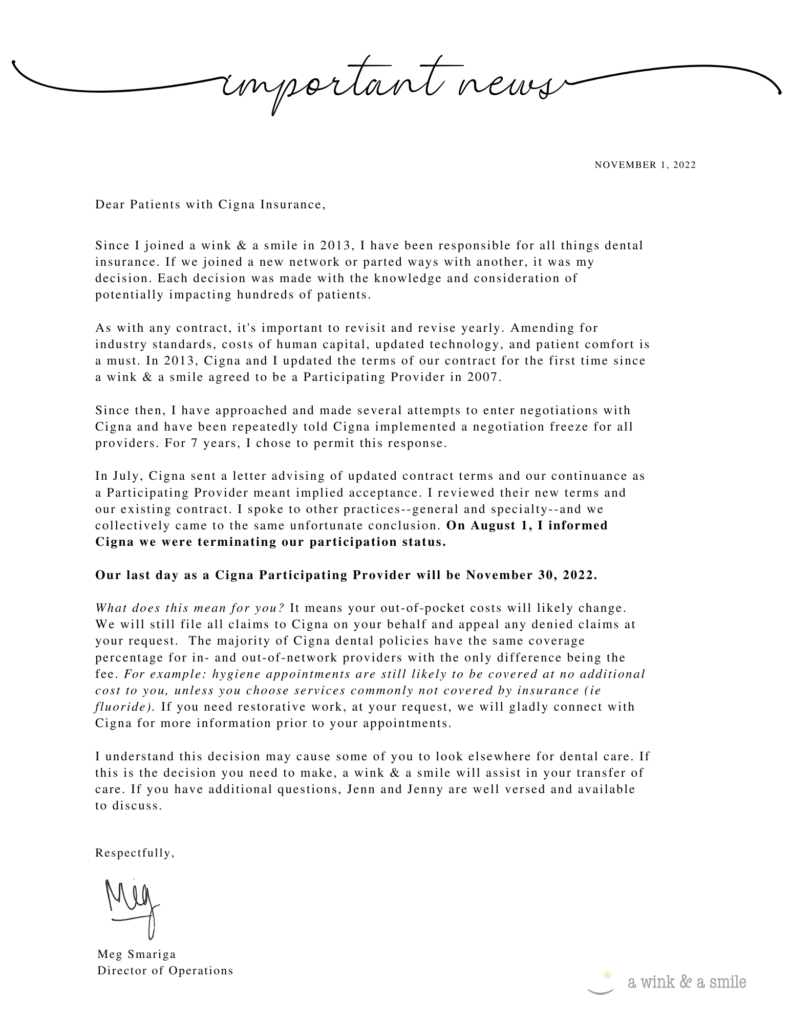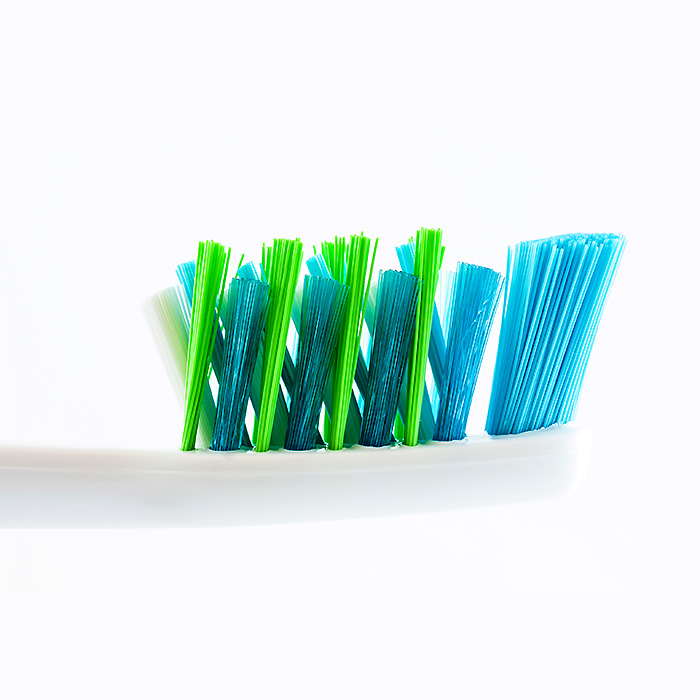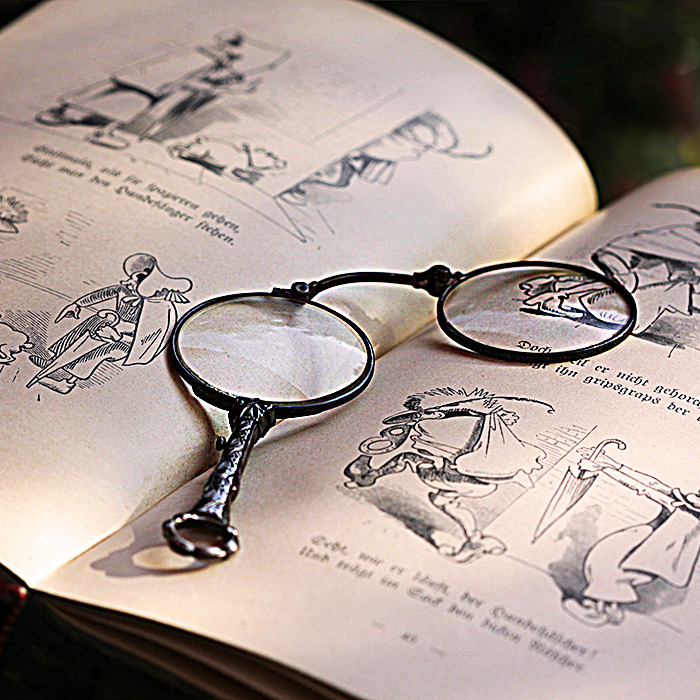a letter to your from our Director of Operations

Schedule your hygiene appointment February 27-28 ONLY FOR FREE WHITENING!!
(limited to 5 appointments)

Call or text 571.333.1250 now to schedule.

WE OFTEN TAKE STEPS to achieve that sparkling white smile when we brush in the morning and before we go to bed. The truth is, what we consume throughout the day is often the largest contributor to whether or not our smile will light up a room.
Although there are several causes for tooth discoloration, we can separate them into three basic categories: intrinsic, extrinsic, and age-related discoloration. Here’s how each affects your teeth, and what you can do to ensure a life full of bright, healthy smiles.
Extrinsic tooth discoloration occurs when the enamel—the outer layer of the tooth—becomes stained. These stains are caused by pigments, acidic content, and other chemical factors (natural or artificial) present in things we enjoy eating and drinking.
A few common culprits for tooth discoloration include:
Most of these items won’t have an immediate affect on the color of your teeth, but over time, they can begin to wear away and cling to enamel causing unsightly stains. Try to consume these in moderation and always remember to drink plenty of water and brush your teeth after meals.
Here’s a couple of quick tips to help avoid those wine stains!
Intrinsic tooth discoloration occurs when the inner structure of the tooth—the dentin—begins to darken or develop a yellow tint. This type of discoloration can develop because of a trauma sustained to the tooth. Sometimes when a tooth sustains trauma during childhood, it can damage the developing permanent tooth beneath it, affecting the tooths color. If a trauma is sustained during adulthood, internal bleeding can potentially discolor the damaged tooth.
Other causes include uses of medication at certain stages of life or being born with a rare condition called dentinogenesis imperfecta which can cause gray, amber, or purple discolorations. If you have questions about intrinsic discoloration, come in and see us and we can help answer your questions.
Age-related tooth discoloration is a combination of both intrinsic and extrinsic factors. The dentin inside our teeth naturally yellows as we age. Enamel on the outside of teeth also thins as we get older, allowing the yellow pigment of the dentin to show through. A lifetime of consuming certain foods or smoking cigarettes will also contribute to deep-set stains on the enamel’s surface.
We know just how important it is to provide our patients with bright, healthy smiles. Each situation is unique and we provide our patients with effective solutions for their unique oral health needs. If you have any questions about your smile’s appearance, let us know in the comments below or call and make an appointment today!

WITH ALL THE AMAZING technology we see today, it’s easy to overlook the small wonders of the world—like the toothbrush! This small, but remarkable invention is the staple of our oral hygiene and health. Join us on a journey through time as we explore the way the toothbrush has changed across the ages!
Ancient Civilizations Used Sticks to Clean Their Teeth
Today, we understand the importance oral hygiene plays in our overall health. But even over 5,000 years ago people recognized the need for some type of oral care. Babylonian and Egyptian civilizations around 3500-3000 B.C. made “toothbrushes” by fraying the end of sticks and chewing on them!
Later, the Chinese made similar chewing sticks from aromatic tree twigs that were meant to freshen breath. People didn’t just use sticks, however. Bird feathers, animal bones and even porcupine quills were used to pick at food debris in the teeth.
The First Toothbrushes Were Made with Pig Hair
The first mention of an actual brush to clean teeth appears in Chinese writings around the 13th century. Bamboo or animal bone was used as the handle of the toothbrush and pig hair formed the bristles. Toothbrushes weren’t widely used or produced, however, until a couple hundred years later.
Around the year 1780, an Englishman named William Addis was sitting in his prison cell thinking of better ways to clean our teeth than rubbing them with a rag full of soot and salt (yuck!). He carved a handle out of animal bone, made some holes at the top and tied swine bristles to it. When he got out of prison, he turned toothbrush production into a business and made a fortune!
The Modern Toothbrush Continues to Evolve Today
As appetizing as pig hair sounds, aren’t you glad toothbrushes nowadays are made with nylon bristles? Nylon was invented in 1938 and by the 1950s, toothbrushes began to look and feel more like they do today. More technological advances made it possible to develop toothbrushes even further, and the electric toothbrush made its way to the United States in 1960.
People are still looking to drive toothbrush technology forward. New apps are being created all the time to make toothbrushing easier and more enjoyable. It even looks like built-in cameras may be in the future of toothbrushes!
https://www.youtube.com/watch?v=deOqWyRp-XI?rel=0
The Toothbrush: One of Man’s Greatest Inventions?
The idea of the toothbrush was simple, but there’s no doubt it has greatly contributed to our oral and overall health. In fact, when a group of people were asked which invention they could not live without, the toothbrush beat out the car, computer, cell phone and microwave!
So, don’t take your toothbrush for granted. Use it twice daily for a full two minutes!Your pearly whites will thank you.

In today’s world, if you feel your vision growing weaker you simply go to the eye doctor and get a prescription for glasses or contact lenses. It wasn’t always so easy!
Glasses have come a long way since their inception some time in the 13th century.Join us on a journey through time as we explore the way eyeglasses have changed through the ages!
Eyewear Began As A Magnifying Glass
Between A.D. 1000 and 1250, monks developed and used reading stones–much like a magnifying glass–that laid against reading material to magnify letters. The first wearable glasses were invented some time between 1260 and 1290, however the inventor is unknown.
The use of spectacles spread throughout Europe over time. There were various styles available, one of the most popular being the scissor-glasses, used by historical figures such as George Washington and Napoleon Bonaparte.
In the 1780s, Benjamin Franklin developed the bifocal lens, targeting two different areas of vision correction.
In The 19th Century, Eyewear Became A Fashion Statement
The most iconic piece of eyewear popularized in the 1800s was the monocle(think Mr. Peanut), meant for vision correction in one eye only. Monocle wearers were usually men in society’s upper classes. Women, on the other hand, had their own fashion statements to worry about.
The 19th century saw the advent of what was called the lorgnette, two lenses in a frame held with a handle on one side. The lorgnette was popular with the ladies, many of whom would not wear spectacles, and was thus more of a fashion accessory than a visual aid.
Pince-nez, French for “pinch nose,” glasses were developed and popularized in the late 1800s and early 1900s. These glasses were not supported by earpieces and stayed on by gently pinching the nose. Pince-nez glasses were sported by U.S. President Teddy Roosevelt.
Hollywood Stars Heavily Influenced 20th Century Style
Glasses of the past, such as pince-nez, were seen as stuffy and out of date by the early 1900s. Hollywood stars began to popularize round, tortoiseshell spectacles that better resemble the glasses we see today. Temple spectacles became all the rage.
By the 1940s glasses were available in many sizes, shapes and colors due to advances in the manufacture of plastics. As glasses became more customizable over time, they began to reflect the personality and tastes of the wearer.
https://www.youtube.com/watch?v=wwM9mnw4v4s?rel=0
Come Explore Our Eyewear Collection
Eyeglasses have been regarded by many as one of the most beneficial inventions in human history. Through the innovation and exploration of past thinkers, glasses have become an essential visual aid for many people.
And when it comes to eyewear style, nowadays your options are limitless. At our practice, whatever your taste and personality, we have the frames for you.We only carry eyewear of the highest quality. Come explore our collection today!
Our patients make our job worthwhile!
The content on this blog is not intended to be a substitute for professional medical advice, diagnosis, or treatment. Always seek the advice of qualified health providers with questions you may have regarding medical conditions.
